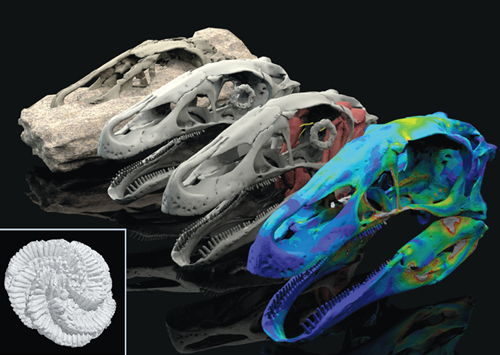The Buzz on Restoration Service
Wiki Article
Some Known Details About Restoration Service
Table of Contents7 Simple Techniques For Restoration ServiceThe 9-Minute Rule for Restoration ServiceFacts About Restoration Service UncoveredThe Single Strategy To Use For Restoration ServiceThe Greatest Guide To Restoration Service
Rather, dry specimens ought to be protected with natural solvent based consolidants such as Butvar or, or Acryloid B72. The 2nd approach to dealing with damp specimens is the slow-moving, controlled drying out method to stop breaking as well as delamination. Old fish tanks made satisfying drying chambers. Restoration Service. The damp samplings can be positioned in the storage tanks and plastic food cover placed over the top with an elastic band around the border to hold the cling wrap tight.For larger specimens, an inexpensive, but useful drying out box can be quickly created by placing an item of clear plastic sheet, such as Visqueen, over a tough box. Place the damp sampling inside the box and also cut a couple of flaps or slits in the plastic. The flaps will allow a slow, controlled exchange of the wet air in the box with the lower RH (family member humidity) ambient air outside the box.
Again, flaps or slits reduced right into the bag or outdoor tents would manage the air flow. To check adjustments in RH, a moisture scale can be positioned in the control location in addition to the specimen. One unfavorable side effect of the slow-moving drying out technique which keeps the sampling damp for an extended period of time is that it promotes mold development.
All About Restoration Service
The objective of all managed drying out treatments is to bring the high RH of the damp specimen slowly downward up until it matches that of the storage area. Also if a water based consolidant is used to conserve (protect) a wet sampling, it is suggested to apply regulated drying treatments till the specimen is stabilized to storage setting conditions.
Storage space below 50% RH can lead to breaking as well as shrinking as the sampling dries out. RH above 70% motivates mold and mildew and also fungal growth which can harm sub-fossil bone. Considering that both RH and mold and mildew and also fungal development are temperature level reliant, it is necessary to keep the temperature level in the slim excellent series of 65 to 72 levels - Restoration Service.
Please bear in mind that waterbased consolidants ought to never be related to samplings which have actually thoroughly dried out. Specific attention ought to be offered to filler products used to fix or recover sub-fossil bone. Materials which reduce or expand upon healing should be stayed clear of as either action can harm the sampling. Plaster need to not be used on really completely dry specimens, given that the water in the plaster will trigger the specimen to swell as well as crack.
The Of Restoration Service
Epoxy putties, like Magic Sculp, although they are not quickly reversible, are OK if the repair service is irreversible, as well as not one that is most likely to be undone. Butvar or polyvinyl acetate adhesives can be loaded with Cab-O-Sil or silica microbeads to form a stiff paste that can be used to fill up fractures and voids.Polyethylene glycol (PEG), or Carbo, Wax, as it is typically called is a water soluble wax made use of for protecting wet wood artefacts. Its why not check here usage as a consolidant for wet bone has blended testimonials, specifically when it is liquified in water to make a solidifying service for bone. Nevertheless, it has been made use of to get rid of moist specimens from caves or various other damp atmospheres by melting the Carbo, Wax and also putting it over the specimen.

The smart Trick of Restoration Service That Nobody is Discussing
After the resin had healed for 6 hours, he submersed his specimen in a 5% liquid option of thioglycollic acid (19 components distilled water to 1 component thioglycollic acid). The addition of the calcium orthophosphate is to prevent the thioglycollic acid from scavenging phosphate from the bone.
My very first experiment on removing iron down payments with thioglycollic acid was on a chert tool from the Aucilla River. The chert sampling was so heavily dirtied with iron deposits, that it was tough to recognize real nature or form of the tool. I positioned the tool in a 5% solution of thioglycollic acid composed as aboveexcept that I omitted the Recommended Reading calcium orthophosphate.
Restoration Service for Dummies
It was then eliminated, washed in water, and also placed in a 5% why not try here ammonium hydroxide service for a few mins to neutralize the acid. At this point the specimen was placed in a water bathroom for a number of hrs.Thioglycollic acid is readily available from Fisher Scientific supplies at a cost of about $25 dollars per 100 ml bottle. That would certainly make about 2000 ml of 5% service. When dealing with any chemicals, one ought to constantly check out the products security data sheets which the vendors supply and also adhere to all regulations for secure use.
Hydrogen sulfide is a toxic gas, however familiar to every person as the smell of rotten eggs and also sewage system gas. In the tiny amounts utilized for getting rid of iron from flint devices, using this acid must provide few problems, especially if the procedure is performed in a fumehood or in a covered container positioned in a well aerated area.
Report this wiki page